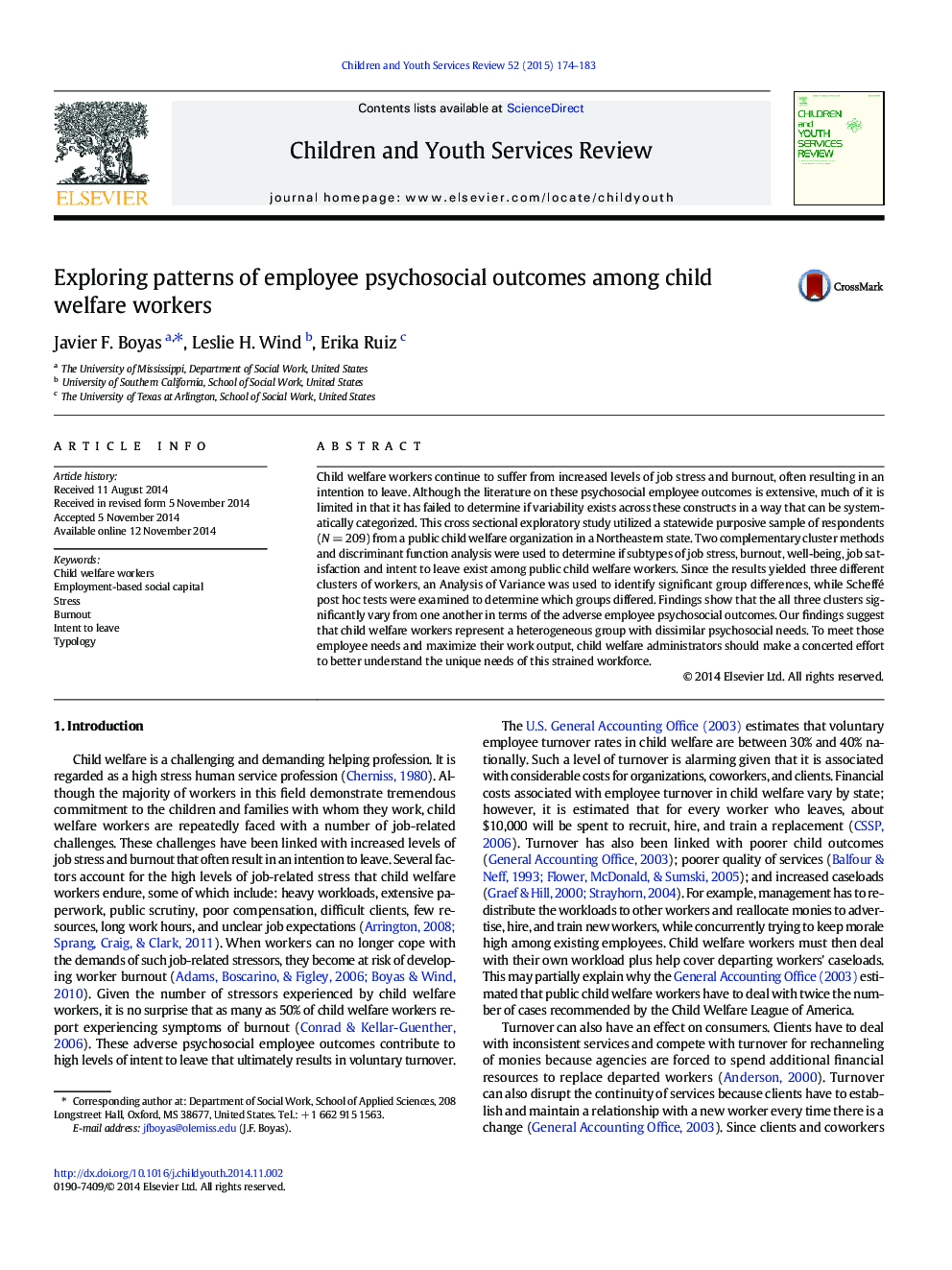| Article ID | Journal | Published Year | Pages | File Type |
|---|---|---|---|---|
| 346015 | Children and Youth Services Review | 2015 | 10 Pages |
•Results of the cluster analysis identified 3 types of child welfare workers: Leavers, Perseverers, and Thrivers.•Age was one characteristic that significantly varied by cluster; older workers appeared to be thriving more than younger workers.•Child welfare workers are a heterogeneous group with dissimilar psychosocial needs as evidenced by the number of clusters.
Child welfare workers continue to suffer from increased levels of job stress and burnout, often resulting in an intention to leave. Although the literature on these psychosocial employee outcomes is extensive, much of it is limited in that it has failed to determine if variability exists across these constructs in a way that can be systematically categorized. This cross sectional exploratory study utilized a statewide purposive sample of respondents (N = 209) from a public child welfare organization in a Northeastern state. Two complementary cluster methods and discriminant function analysis were used to determine if subtypes of job stress, burnout, well-being, job satisfaction and intent to leave exist among public child welfare workers. Since the results yielded three different clusters of workers, an Analysis of Variance was used to identify significant group differences, while Scheffé post hoc tests were examined to determine which groups differed. Findings show that the all three clusters significantly vary from one another in terms of the adverse employee psychosocial outcomes. Our findings suggest that child welfare workers represent a heterogeneous group with dissimilar psychosocial needs. To meet those employee needs and maximize their work output, child welfare administrators should make a concerted effort to better understand the unique needs of this strained workforce.
